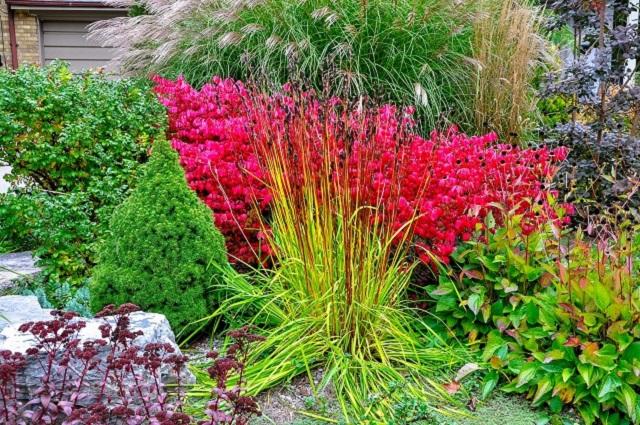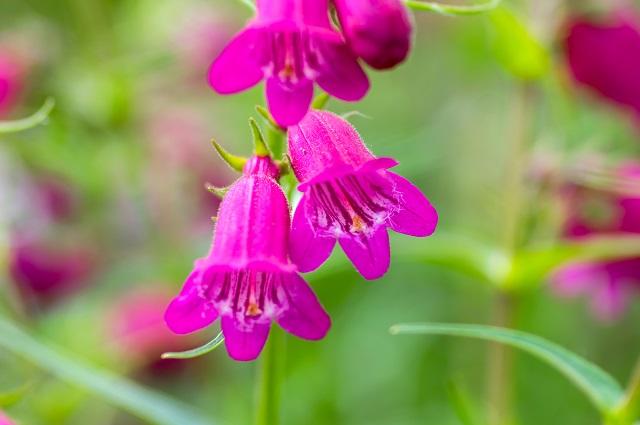Xeriscape Information
Xeriscape Information
A surprising amount of water is used in the home landscape. Studies have shown that as much as 70 percent of water from a municipal water system can be attributed to residential use. In addition to municipal water sources, a percentage of water from private sources or wells also goes to residential use. Of water used at homes, almost half is used to maintain the landscape.
Our landscapes may remain beautiful and productive if we use water efficiently and if we use landscape plants that require less water. A secondary benefit is that plants with low water requirements are frequently adapted to the semi-arid state of Colorado. Landscapes using these water-efficient plants are often called xeriscapes.
Xeriscaping offers a way to have beautiful, livable landscapes without excess water use. It allows areas close to us to be cooler and hospitable, while investing less water on parts of the landscape in which we spend less time. Even lower-water-use areas can be very attractive if the seven xeriscape principles listed below are employed. Using xeriscape makes our landscapes more compatible with our Colorado environment.
Denver Water coined the word Xeriscape in 1981 by combining "landscape" and the Greek word "xeros," which means dry. Xeriscape refers to a landscape that uses little supplemental water. It does not refer to a dry, barren landscape, nor is a xeriscape a “no maintenance” landscape. A well-designed Xeriscape can be a beautiful addition that can invite wildlife, provide year-round interest and save water.
The Xeriscape concept is based on the seven principles listed below:
A good landscape and garden begins with a good design. Water conservation in the garden can be maximized if it is considered in the initial planning phase. Xeriscapes can be divided into zones with different water requirements. An “oasis”, a zone with the highest water use, is usually where people spend more time. The patio area and perhaps the entry area are candidates for the oasis. An oasis receives more water and, as a result, is cooler. This area also may require more maintenance and usually will be the landscape’s most colorful area.
Beyond the oasis is a transition zone of moderate water use. The transition zone contains plants that require less frequent irrigation and usually requires less maintenance. Further away may be a low-water-use zone, which requires no supplemental water or very infrequent irrigation during prolonged dry periods. Designing the landscape with areas of differing water demands is called “hydrozoning.”
Irrigation is necessary in a xeric landscape, at least during the first few years while the plants’ root systems are developing. Following establishment, irrigation may still be necessary depending on the landscape design and plants’ needs. The oasis and the moderate-water-use zones have the greatest need for irrigation, but it is wise to plan irrigation even in the low-water-use zone to allow for new planting, changes, and years of severe drought.
The irrigation system–whether automatic, manual, or hoses moved as needed–also is an integral part of landscape planning. It is the foundation around which the plantings are designed. The water-use zones–low, moderate, and oasis–should be separate from each other, and each managed independently. With in-ground irrigation systems, each zone should be under a separate valve.
The water should be applied as efficiently as possible. Sprinkler systems are appropriate in areas of turf, but drip, bubbler, and micro-spray systems or soaker hoses are more appropriate for shrubs, trees, and annual and perennial plantings. Efficient irrigation applies water where it is needed, not where it will be wasted and benefit only weeds.
Mulch provides a cover over the soil, reducing evaporation, soil temperature, and erosion. It also limits weed growth and competition for water and nutrients. Landscape mulch materials vary in their suitability for various uses. Impermeable plastic mulch has a function in the landscape, but is very often misused. It may be used in areas where the soil must be kept dry, for example, next to a foundation where termiticides have been applied and where you are channeling harvested water from one area to another.
Otherwise, permeable weed barriers, bark, gravel, and other porous mulches are better because they allow water and oxygen to pass to plant roots. Dust will eventually collect over the weed barrier fabrics and allow growth of some weeds, so it is not a perfect solution, but these porous fabrics are useful for weed control when the bark or gravel covering it is less than 3 to 4 inches thick, or annual weed potential is great.
Organic mulches keep the soil moist and reflect less heat. They work well with plants adapted to cooler microclimates. Bark mulch should not be used on steep slopes or in drainage ways because it washes away in heavy rains.
Some plants native to very well drained soils grow better in gravel mulches. Remember, rock mulch becomes very hot in our climate and can injure or limit growth of some plants. Ultimately, the mulch should be shaded by landscape plants that will provide environmental cooling. Using gravel mulch alone as a landscape element may result in increased home cooling bills and require greater weed control efforts.
Soil preparation is an important part of successful xeriscaping and gardening. When done prior to planting, soil testing can help determine which plants are best adapted to the site and which amendments are appropriate for improving the soil for the selected plants.
In the oasis and moderate-water-use zones, adding compost increases the soil’s water-holding capacity. In the low-water-use zone, soil preparation may only consist of rototilling to loosen the soil and reduce the soil compaction associated with building construction in planting areas. Loosening the soil improves root development and allows better infiltration of water and air needed by plants’ roots. This is important in all water-use zones. However, since soil disturbance promotes the germination of weed seeds, limit tilling to areas being planted.
One of the most controversial and misunderstood of the xeriscape principles is the concept of appropriate turf. Turfgrasses have a place in the landscape, even the xeriscape. Turf is easy to maintain, although it requires more frequent care than many other landscape plants. Turf provides a play surface for children and pets. It is an important element in cooling the local environment, reducing erosion, and preventing glare from the sun.
Other ground cover plants can perform these functions–except providing a play area. Consider where and how large a turf area is desired, how it will be used, and during which seasons it will be used. You are then prepared to limit turf to useful spaces and determine which grasses will best serve your needs.
Plants that require less water are becoming more readily available in the nurseries. There are many very attractive plants for use in water-wise landscapes. While you may use many of your old favorites in the oasis zone, there is a wide variety of colorful, fragrant, and beautiful plants for the less irrigated part of the landscape. Many have long blooming seasons and attractive leaves. Some provide autumn interest with colorful foliage and fruit, while others offer winter interest with their fruit, seed stalks, and winter colors ranging from silver, to gray, to many different green and brown shades.
Xeric plants depend on the formation of extensive root systems to effectively gather water for proper growth. While they may look unimpressive in nursery containers, they rapidly become beautiful plants in the landscape.
Maintaining the landscape cannot be forgotten, even in a xeriscape. While many gardeners find the time spent gardening very relaxing, people with less time or other interests may prefer a landscape that requires minimal time working in the garden. The design will determine the required maintenance. Any garden will require some maintenance: pruning, removing trash that has blown into the landscape, occasional weeding and pest management, checking that the irrigation system is functioning properly, and adjusting automatic irrigation systems as the seasons change.


